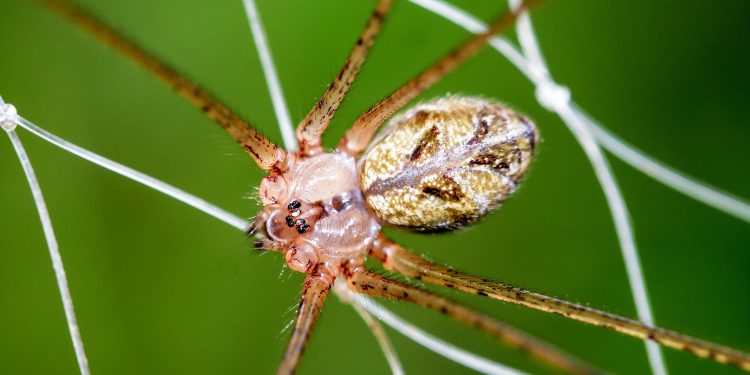Most people hear “brown recluse” and think of hospital visits and horror stories. A Kansas family lived in a house with more than two thousand of these spiders for five and a half years, and no one was bitten.
One study documented 2,055 brown recluse collected or killed from a single home in Lenexa, Kansas, over six months, with no confirmed bites on the four people living there.
The researchers recorded the size of the spiders, where they were found and how catches changed over the season.
Brown Recluse Spiders
This work comes from Richard S. Vetter of the University of California, Riverside. His long-standing focus on brown recluses helps separate fact from myth so the public and doctors can make better decisions.
Brown recluse spiders, Loxosceles recluseprefers dry, undisturbed spaces and will hunt insects at night. They do not waste venom and most will back away rather than tangling with a person.
Read the numbers
Collectors have documented 842 spiders from sticky traps and 1,213 by hand in this Kansas home. Of the hand-collected group, 323 were large, 255 medium-sized, and 601 small, a snapshot of a thriving inland population.
To estimate the medical risk, the team treated medium-sized spiders, measuring around 5 millimeters in length, as potentially causing envenomation, that is, injection of venom through a bite.
The researchers noted that even with about 400 brown recluse capable of injecting venom, none of the occupants of the Kansas house were bitten.
Early in the season, there were more large and medium-sized spiders, then fewer later, as easy-to-spot individuals were eliminated and the population aged.
Small spiders showed up much more often in traps than in manual searches, which makes sense because traps capture what we don’t see.
Why Brown Recluse Rarely Bite
Health officials note that when brown recluse bites do occur, they are rarely as serious as believed, usually causing only minor redness and swelling that heal with normal wound care.
Brown recluses are not aggressive. They stay still and hide in tight places, which means accidents can happen, but contact is usually brief and the spider moves away.
The established range in the United States extends from the lower Midwest to parts of the South, not the entire country. Typical registration map from Nebraska and Ohio to Georgia and Texas.
Apart from this footprint, verified finds are rare. When a person in an out-of-reach state shows an injury and calls it a recluse bite, the odds are not favorable to that explanation without a spider captured and identified by a trained arachnologist, a scientist who studies spiders and other arachnids.
The diagnosis of brown recluse spider bite is overused for skin wounds whose causes are unclear. This is important because labeling errors can delay proper treatment of infections or other conditions.
The study recommends more evidence when the patient lives outside the scope of the recluse. Checking the spider on site avoids looking for the wrong problem.
More spiders don’t mean more danger
Two people spent about an hour and a half each night collecting spiders from the house for months, increasing face-to-face time with the animals.
There have been accidental mishaps, like a recluse on an arm while loading bedding, but still no injuries.
If recluses had bitten humans at the first opportunity, this six-month effort would have produced several cases. The lack of bites in thousands of encounters indicates that this is a conflict-avoidant spider and only bites under real pressure.
Lessons from the Brown House of Recluses
A cluttered room provides more hiding places and more insect prey, allowing populations to build up quietly. Basic steps, like reducing piles of cardboard, using sticky traps along baseboards, and sealing gaps, can reduce the numbers over time.
Most of us will never live in such an infested home, and most will never see a recluse. If you live within the area and find one, take it seriously, wear gloves in storage areas, and avoid holding a spider to your skin.
The name “recluse” is accurate. These spiders stay hidden, move around at night, and save their venom for small prey, not humans.
Their venom can cause tissue damage, what doctors call dermonecrotic effects, but serious consequences are unusual and require careful medical evaluation.
The Kansas case does not invite negligence. It asks us to align our risks with what the data shows, to respect spiders without exaggerating their threat, and to seek identification when claims don’t match where spiders actually live.
The study is published in the Journal medical entomology.
—–
Do you like what you read? Subscribe to our newsletter for engaging articles, exclusive content and the latest updates.
Check us out on EarthSnap, a free app brought to you by Eric Ralls and Earth.com.
—–









